How to Prevent and Get Rid of Ticks on Cats
First Published: 19/06/2018
Last Updated: 25/01/2024
Ticks are blood-sucking parasites that can transmit diseases to cats. If you have an outdoor cat that likes to wander, they're at risk of tick bites and the diseases they spread.
That's why we've put together this in-depth guide to help you spot, remove and prevent ticks from making your cat's life miserable. Read on for all your complete tick prevention advice.
Brief summary
- Ticks are blood-sucking parasites that can transmit diseases to cats
- Ticks are small, spider-like parasites that feed on the blood of animals and are active between spring and autumn in the UK
- Ticks on cats start off small and dark grey or brown but can increase in size and become rounder when they feed
- Ticks are usually found in fields, meadows, woodlands, and areas with tall grass where they wait to latch onto passing animals, including cats
- Tick prevention measures include spot-on treatments, tick collars, regular checks for ticks after outdoor activities, and using a tick twister to safely remove ticks from cats
What are ticks?
Ticks are small, spider-like parasites that feed on the blood of animals. There are several tick species in the UK, and numbers are rising. Ticks are particularly active between spring and autumn, though they can be found in the UK all year round.
What do ticks on cats look like?
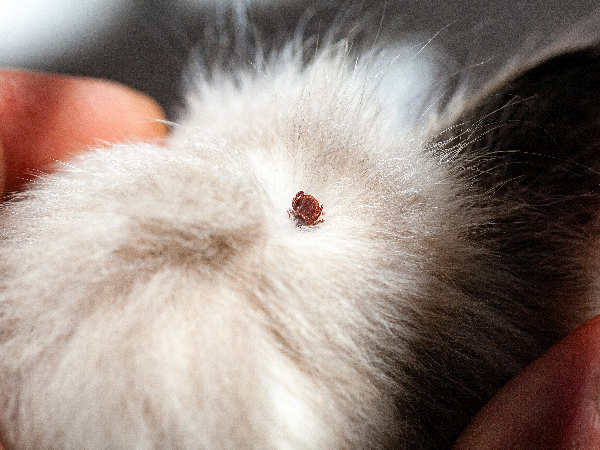
Ticks can vary in size, shape and colour, but there are general similarities between all tick species. Before they have had a chance to feed, they look like small spiders, usually dark grey or brown and only a few millimetres big. However, once they start to feed, they can increase in size to around a centimetre and get darker and rounder, looking like a coffee bean, a red seed or a large grain of rice. Adult ticks have eight legs and an egg-shaped body.
They can sometimes be confused for your cat's nipples, but if you look closely, you'll probably be able to see their legs.
Where are ticks found?
Ticks are less likely to be a problem for cat owners in towns and cities, but you should know the risks no matter where you live.
Usually found in fields, meadows or woodlands, ticks lurk in long grass, waiting to latch themselves on to passing animals – or humans. These parasites need a host (e.g. a cat) to feed from. They can pass bacteria and other microorganisms from one animal to another, which makes them particularly efficient at spreading disease.

Each tick species will have a preferred environment where the conditions are perfect for them to thrive. They can be found almost everywhere in the British Isles, so care must be taken when your cat is out and about.
What are the signs of ticks on cats?
If you live in the countryside, where your cat has free access to fields, woods, or tall grass, they might pick up a tick during outdoor adventures. But remember, even if your cat only steps out into the garden to chill in the sun, they're still at risk.
Ticks are tiny, making them tough to spot. Usually, they're flat and oval-shaped, but they can puff up to the size of a pea when they're full of blood from the animal they're feeding on. Plus, like their distant spider cousins, ticks have eight legs, which you might be able to see if you look closely.
How to find ticks on your cat
After your cat's been outside, run your hands over them to feel any small lumps or bumps. Groom cats regularly, as this can help you find anything attached and also helps remove small ticks.
Ticks typically like to feed in warm crevices where the skin is thin. So pay extra attention to areas like the insides of your cat's ears, around the chin, eyes, armpits, muzzle, and between their paws and toes. Also, watch out for your cat grooming a lot more than usual because this might be a sign they've got a tick.
How do ticks spread diseases?
Ticks need a blood meal at every step of their lives:
When they're larvae (baby ticks!), they need blood to grow into nymphs (think teenage ticks).
The nymphs need more blood to grow into full-grown adult ticks.
Adult female ticks need even more blood to make and lay thousands of eggs, eventually becoming the next generation of ticks.
During their teen and adult stages, ticks can crawl or drop onto your cat and try to hook on and feed. Not every tick will make your cat sick, but if they're carrying a disease, they can pass it onto your cat through their blood when they feed.
What diseases can ticks give cats?
Lyme disease
Lyme disease is an illness caused by bacteria that ticks can carry. Once the tick feeds on your cat, the bacteria enter your cat's bloodstream and can quickly travel around the body.
If a tick feeds on an animal infected with Lyme disease, it can pass it to the next animal it feeds on. Once a tick attaches, it takes 1-2 days to pass on any bacteria, so swift removal of ticks is so important.
Symptoms of Lyme disease
Some cats do not show any signs of Lyme disease or may take months to develop symptoms. Common signs include:
- Swollen lymph nodes (the glands around the body)
- Swollen joints and lameness
- High temperature (fever)
- Loss of appetite
- Depression and lethargy
If Lyme disease isn't treated, it can cause serious issues, affecting the kidneys, nervous system, joints and heart.
How the vet checks for Lyme disease
Your vet can tell if your cat has Lyme disease by checking them over, asking about their lifestyle (like whether they go outdoors a lot), and doing blood tests. The blood tests can spot traces of a bacterium called Borrelia burgdorferi, which causes Lyme disease.
Treatment of Lyme disease
Because Lyme disease is a bacterial infection, it can be treated with antibiotics. However, these antibiotics may need to be taken for at least 30 days. In some cases, lifelong treatment may be needed.
There might also be extra treatments needed for acute cases and certain symptoms. This could include things like getting extra fluids, painkillers, and special diets.
Ehrlichiosis
Ehrlichiosis is a pretty rare but serious disease that ticks can carry. These ticks transmit super tiny organisms that act like parasites. They invade cells and slowly destroy them from the inside. Even though it's rare, ehrlichiosis can be life-threatening if it's not found and treated.
Symptoms of ehrlichiosis include:
- Coughing
- Stiffness
- Swollen joints
- Pale gums and nose
- Lethargy
- Inflammation in the eyes
- Fever
To figure out if your cat has ehrlichiosis, your vet may run multiple blood tests run multiple blood tests. This is to determine if your cat has ehrlichiosis and may include a specific PCR test, similar to the tests humans use to check for COVID-19. This test is the only way to spot the microscopic parasite.
Treatment of ehrlichiosis
Treatment is usually pretty straightforward. Your vet will typically give your cat antibiotics and some fluids. While that's happening, they might also give them pain relief medicine to help with other symptoms.
Anaplasmosis
Anaplasmosis is an illness that ticks can spread, caused by a bacteria called Anaplasma phagocytophilum. This disease is found worldwide and can affect animals like cats and foxes. Sometimes, a cat might not show any signs that it's sick for a few weeks or even longer, so it's important to know what to look out for.
Symptoms of anaplasmosis
Cats can have anaplasmosis without showing signs. However, if there are symptoms, they might include:
- Lameness
- Joint pain
- Fever
- Bleeding
- Bruising
- Not wanting to eat
Diagnosis of anaplasmosis
Your vet can usually find out if your cat has anaplasmosis by doing blood tests for antibodies.
How to treat anaplasmosis
Anaplasmosis is usually treated with antibiotics. Your cat should start feeling better after a day or two, but they'll need to take the antibiotics for two weeks to ensure the bacteria are completely gone.
How to prevent ticks on cats
Various treatments and measures can help prevent your cat from being bitten by ticks.
Spot-on treatments
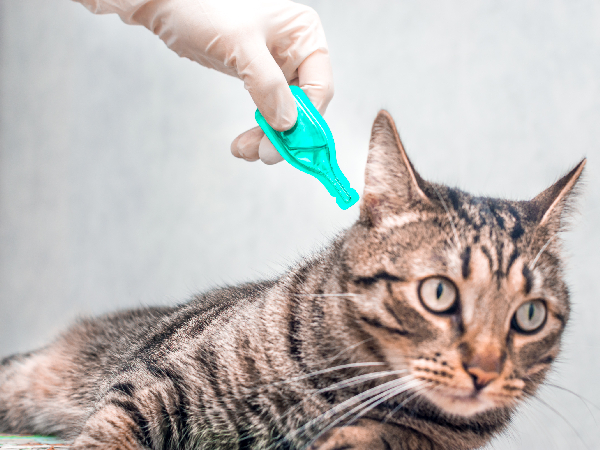
Spot-on treatments are small liquid applications of insecticides that kill fleas and ticks on your cat. Once you apply the treatment, generally between your cat's shoulder blades to stop them licking it off, the insecticide spreads over the entire surface of your cat's skin.
You must regularly re-apply your cat's spot-on treatment to keep them safe - this might be monthly or every few months, depending on the product. While you can buy spot-on treatments from most pet shops, these are not always effective, and the best protection generally comes from treatments only your vet can prescribe. Routine healthcare plans, like Pet Health Club, offer vet-prescribed flea and tick treatments for your cat as a member benefit.
Never use a spot-on dog product on a cat. These often contain chemicals which can be very harmful to cats.
Tick collars
Tick collars work by slowly releasing chemicals from the collar across your cat's skin, which repel ticks and other bugs from biting. Any ticks that do latch on are swiftly killed.
Check your cat
Even if you use a collar or spot-on treatment, you should still check your cat for ticks when they've been outdoors. Look between their toes, up their legs, neck, and face by gently running your hands over them or combing through their fur. Most diseases won't be transmitted immediately, so removing ticks quickly is important to prevent spread.
How to tell how long a tick has been attached to a cat
Ticks usually take a couple of days to fill up on blood and drop off when they're full. But while they're feeding, they could give your cat a harmful disease.
If the tick still looks flat and dull-coloured, your cat probably picked it up on their latest outdoor exploration. But if the tick looks puffed up and its colour has changed from a dark red to a greyish or brownish, it's likely been feeding there for some time.
No matter how long the tick has been on your cat, getting it off as quickly as possible is the most important thing.
How to remove a tick from a cat
If your cat spends time outside, there's a chance they could pick up ticks. These parasites love to attach themselves when your cat walks through tall grass, rolls around, or chases something into bushes.
If you find a tick on your cat, it's really important to remove it carefully — or have your vet do it. Squeezing a tick can push blood back into the cat, increasing the chance of disease, and removing them incorrectly can result in irritation around the area and mouthparts left behind in the cat. It's best to use a specific tool for removing ticks - a 'tick twister'.
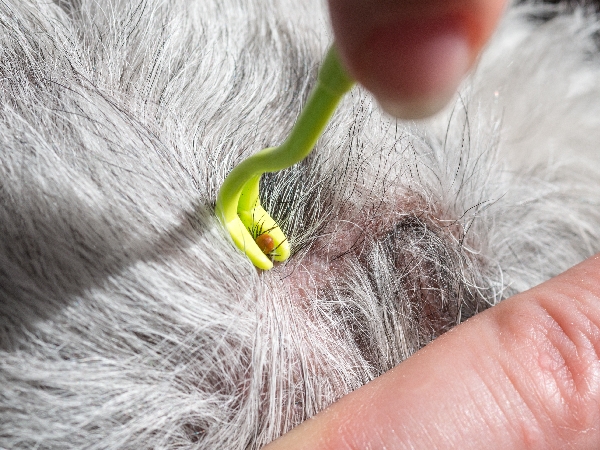
Here's how to get a tick off your cat:
- You'll need to use a tick twister to get the tick off. You can buy one online or from your local vet
- Part the hair around the skin, and push the skin around the tick down a little so you can get the tick twister under the tick
- Slide the tick twister gently and slowly under the tick, keeping the forks flat to the skin and with the forks pointing away from you until you feel some pushback. Then gently twist the twister, keeping it flat on your cat's body until the tick lets go
- Get rid of the tick by flushing it down the toilet and clean the spot where it was
If a tick bites your cat, watch them for signs of sickness, like fever, tiredness, not wanting to eat, and limping. If you notice any of these signs, get your cat to the vet immediately.
It's always better to prevent tick bites than treat them, so we recommend Pet Health Club's routine healthcare plans for cats of all ages.
What types of ticks are found in the UK?
Generally, four main ticks in the UK can feed on your cat. Each prefers particular habitats.
Hedgehog tick
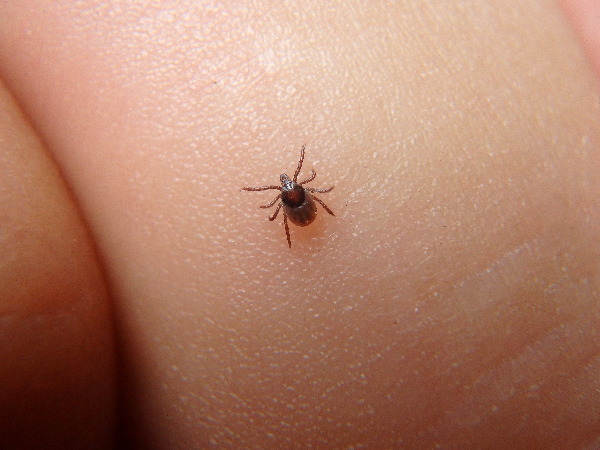
This is often the most common tick found on cats because the larvae exist almost exclusively on hedgehogs, meaning they have easy access to your garden. While their preferred food source is the blood of hedgehogs (or other small burrowing animals, such as stoats and weasels), they're more than happy to feed on cats. They are most commonly seen in southeast England but have been found across the UK and as far north as Scotland.
Deer tick
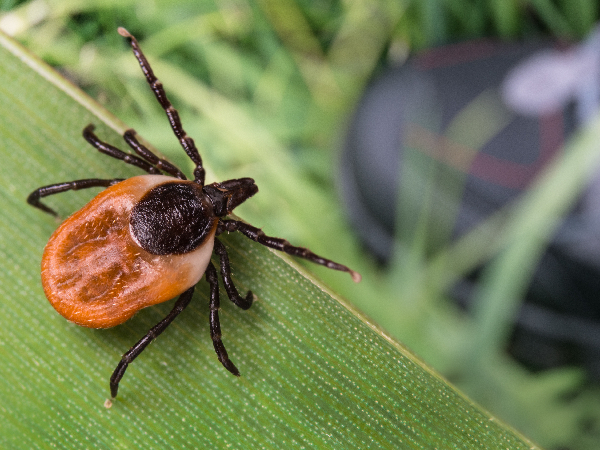
Also known as the sheep tick or castor bean tick, these ticks like to hang out on tall grass, waiting for a host. So when your cat brushes against the grass, the tick can easily latch onto them.
Deer ticks prefer damp areas, and you'll find them in places like western and northern England and Scotland. But don't think they're not around if you live in other areas like East Anglia's woodlands or the southeastern coasts — they're there, too.
Even though you usually find these ticks away from city life, they can sometimes show up in your backyard, brought in by wild animals like foxes. So it's good to remember that your cat can pick up ticks even while just chilling in your garden.
British cat tick
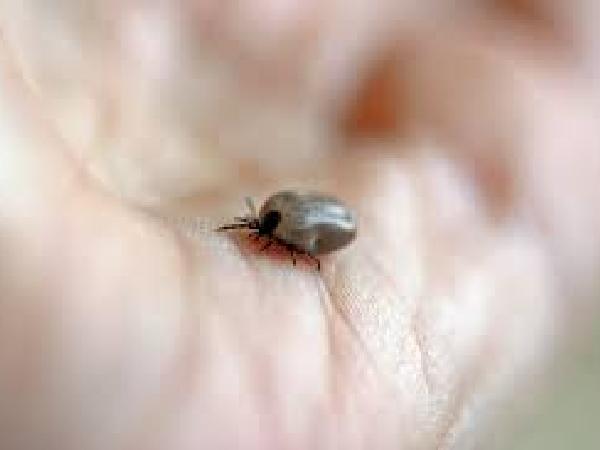
Also known as the fox tick, this parasite is most commonly found in places where dogs are kept, such as kennels, but it can also be found in catteries. British cat ticks can carry several diseases, including babesiosis, anaplasmosis, and ehrlichiosis. These diseases can be serious and even fatal in cats.
If a British cat tick gets into a cattery, it will typically settle in a high spot, such as the ceiling. Once there, the female will lay eggs in small cracks and gaps, giving the baby ticks, or larvae, a safe and warm place to grow up.
If you're planning to board your cat, choosing a cattery that takes tick prevention seriously is important. The facility should have a tick-control programme, which may include using tick-preventative medications on the cats, treating the premises for ticks, and regularly inspecting the animals for ticks.
Brown cat tick

While its preferred host is cats, this tick will happily use a cat to feed. Despite not being well-adapted to the British climate — predominantly found in southern Europe — the brown cat tick has been identified on animals brought back from the region.
Consequently, if you're travelling back from Europe with your cat, giving them appropriate treatment beforehand is crucial.
Need more info on ticks on cats?
For expert advice on tick prevention or removing a tick from your cat, get in touch with your local vet.
Find your nearest vet using our Find a Vet page, or speak to a vet online using Online Vets.


